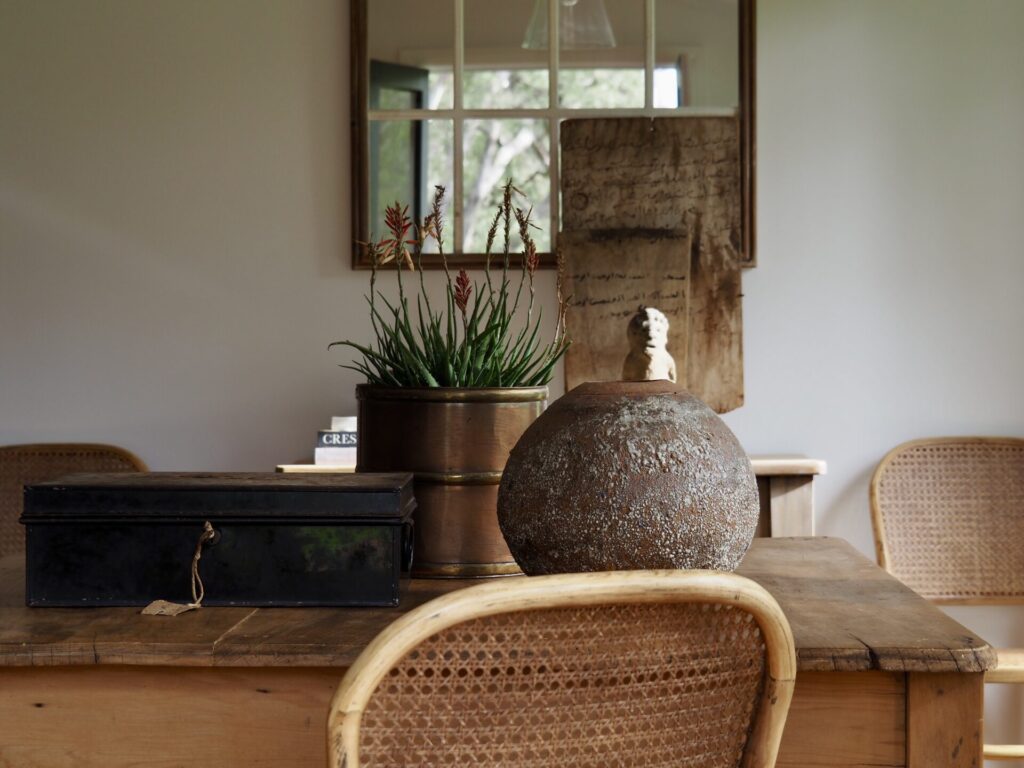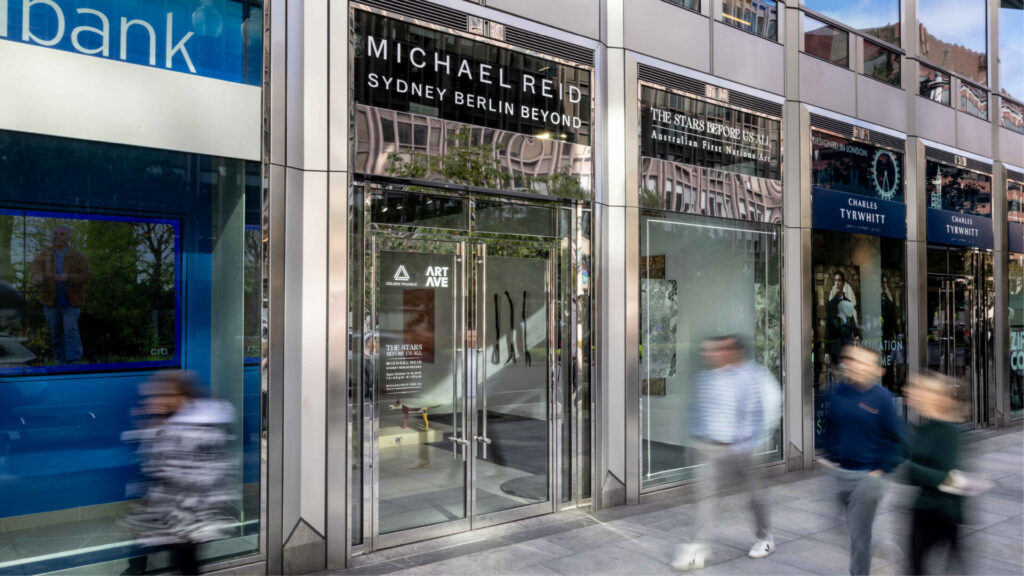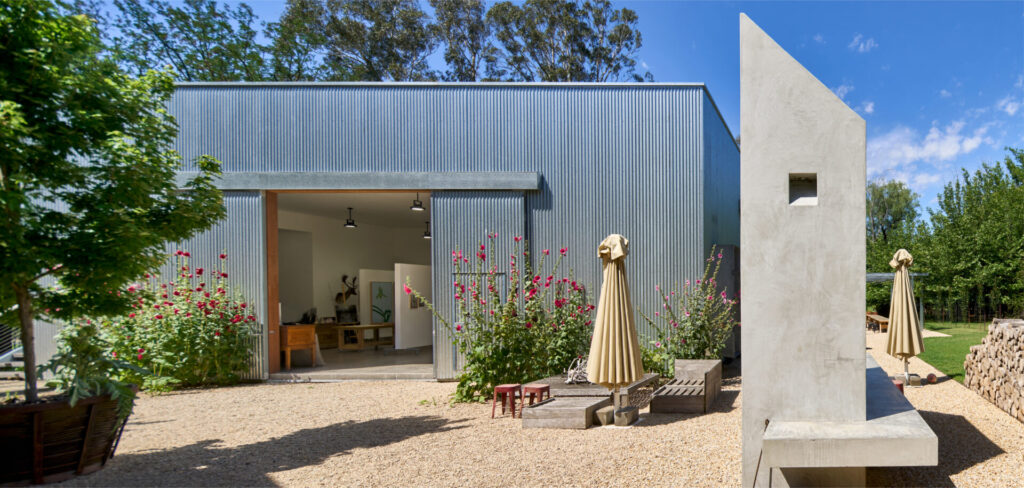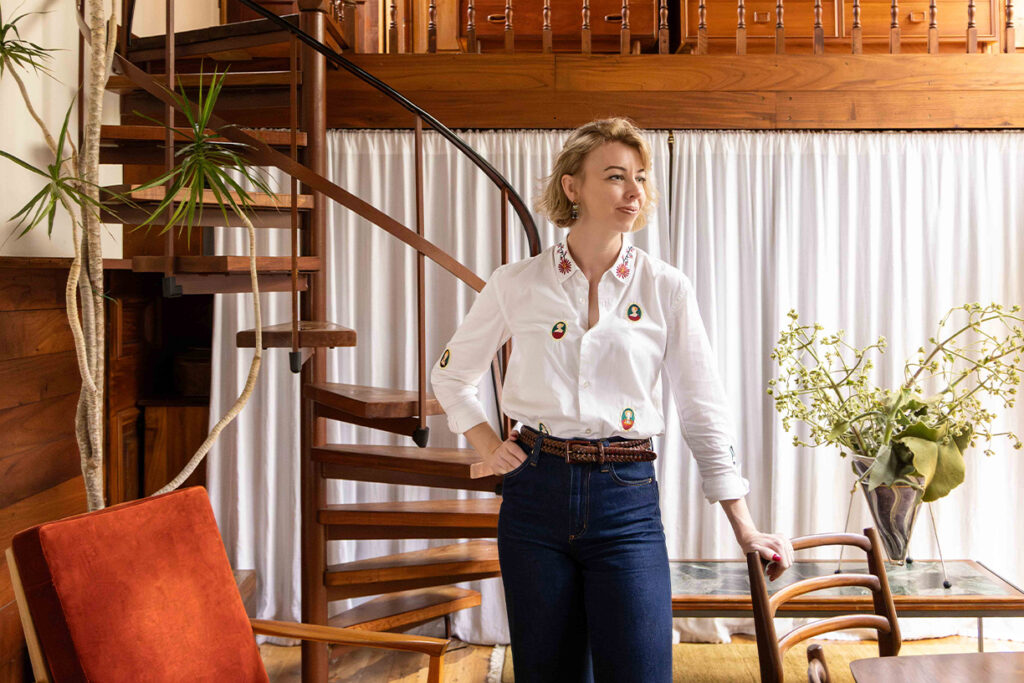Sydney Contemporary by Jason Mowen
Jason Mowen reports from the 10th edition of Australasia’s largest art fair – where close to 100 local and international galleries converged last September to present dazzling and dynamic work by 500 emerging and established art stars.
Words & Photography Jason Mowen
You might remember an Argus story from 2022, Murrurundi to Matino, in which I mention a visit to Il Convento di Costantinopoli. The Italian home of the late Lord Alistair McAlpine, Il Convento is now one of the world’s most magical guesthouses – run by McAlpine’s equally magical Greek wife, Athena – and, pertinent to this particular tale, a repository of Australian art.
A slightly incongruous repository, considering its location in the southernmost reaches of Puglia, except that McAlpine was not only a great aesthete but also an Australophile. There are monumental pictures by his friend, Sidney Nolan, and dozens of texta drawings by Indigenous artist Ngarra, as well as a collection of Ilma, rare hand-held objects used in corroboree dances and ceremonies by the Bardi people, lining a vaulted hallway. They were, Athena told me, by the Bardi elder Roy Wiggan.

Fast forward to 2023 at Carriageworks, the cavernous 1880s railway workshop turned multi-arts cultural precinct in Eveleigh that is home, each September, to the art fair Sydney Contemporary. Arriving early, wearing the mandatory yellow vest as cherry pickers whizzed down aisles and gallerists put the finishing touches on their stands, I was thrilled to see a group of Wiggan’s Ilma inside the main hall.
Presented by the Brisbane gallery A Secondary Eye, they were arranged like brightly coloured totems between double doorways, each one taller than a person, painting and sculpture and performance art all at once. I thought about them after the fair and read up on Wiggan, who created his Ilma outside of their original ceremonial context for institutions and private collections as a way of preserving them for future generations. A sage move if I’m anything to go by, having met them halfway around the world on the thick stone walls of Il Convento before running into their colourful cousins at the fair.
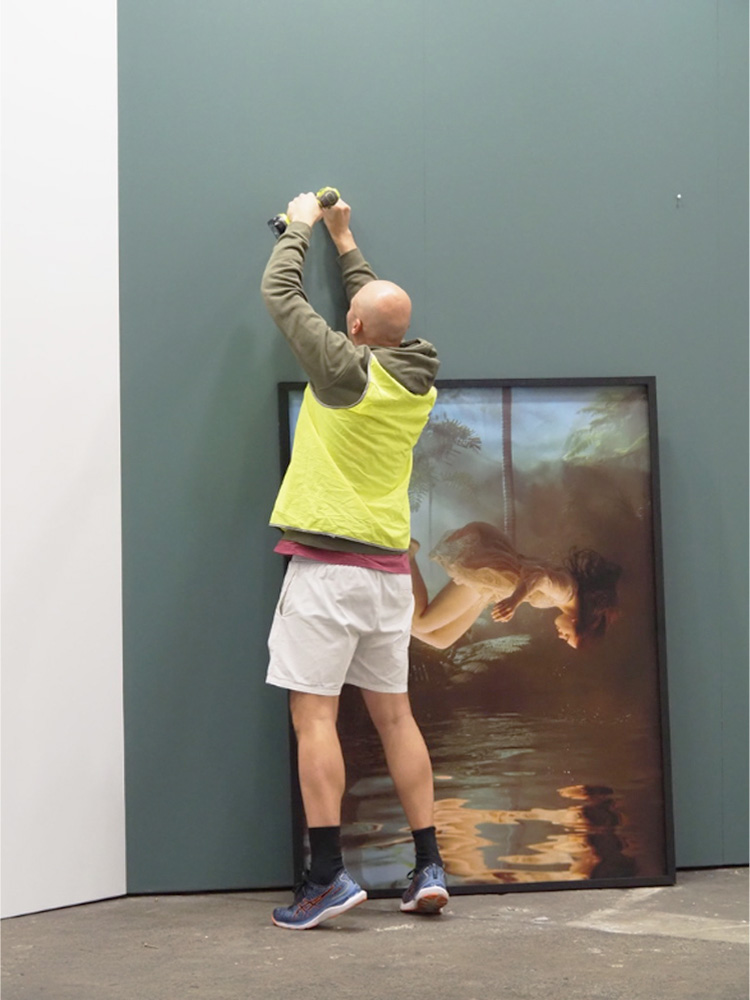
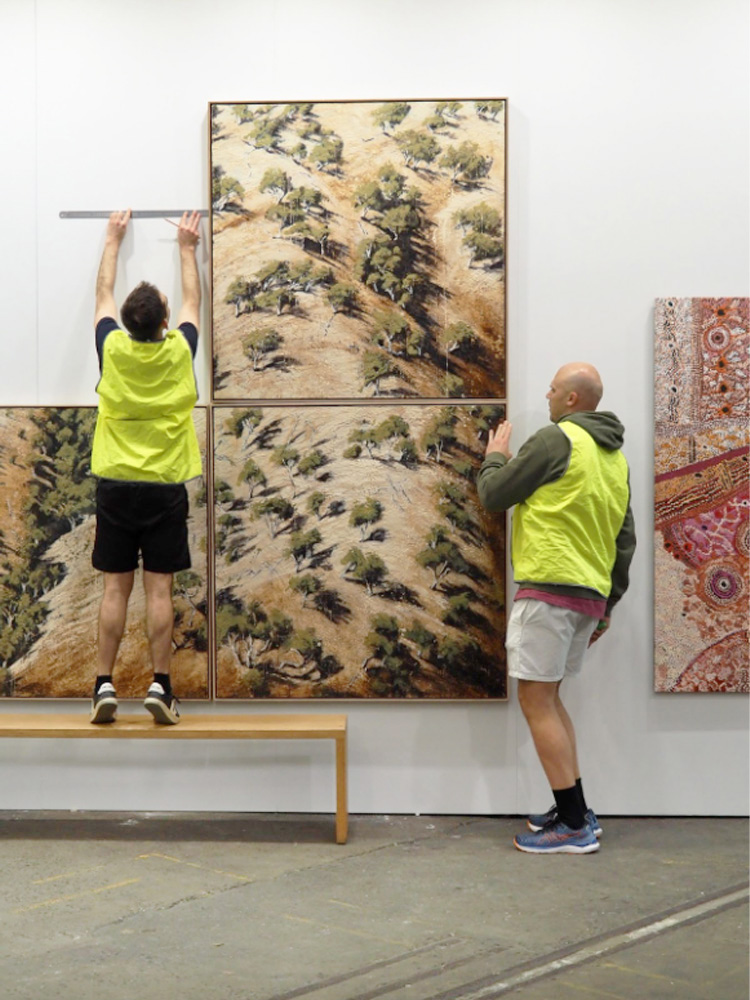
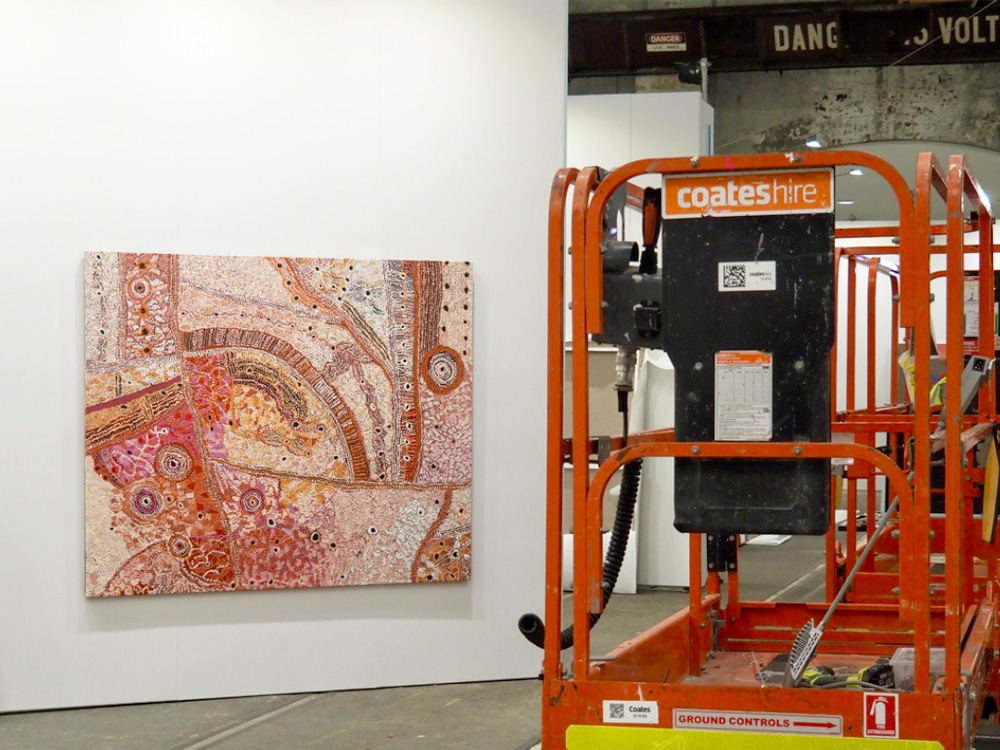
Indigenous works feature prominently at Sydney Contemporary. Utopia Art exhibited giant canvases by Western Desert artists such as Bobby West Tjupurrula, George Tjungurrayi and Joseph Jurra Tjapaltjarri, alongside a striped painting by Emily Kame Kngwarreye. Roslyn Oxley showed the work of a single artist, Yolŋu woman Dhambit Munuŋgurr, whose dynamic bark paintings and larrakitj (hollow poles) stood en masse in otherworldly shades of cobalt blue. Another Yolŋu artist, Gaypalani Wanambi engraved images of trees, delicate and folkloric, onto the back of discarded yellow metal road signs for Michael Reid Sydney + Berlin, in a mixed hang with paintings by Betty Chimney and Regina Pilawuk Wilson and a massive quadriptych by photographer Dr Christian Thompson AO.
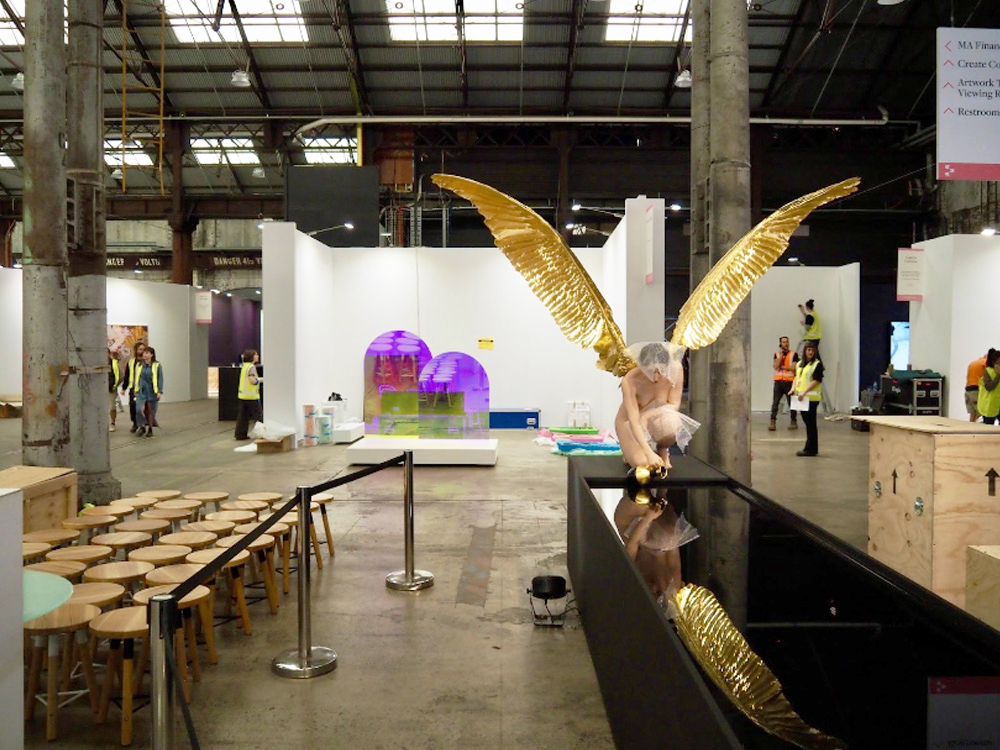
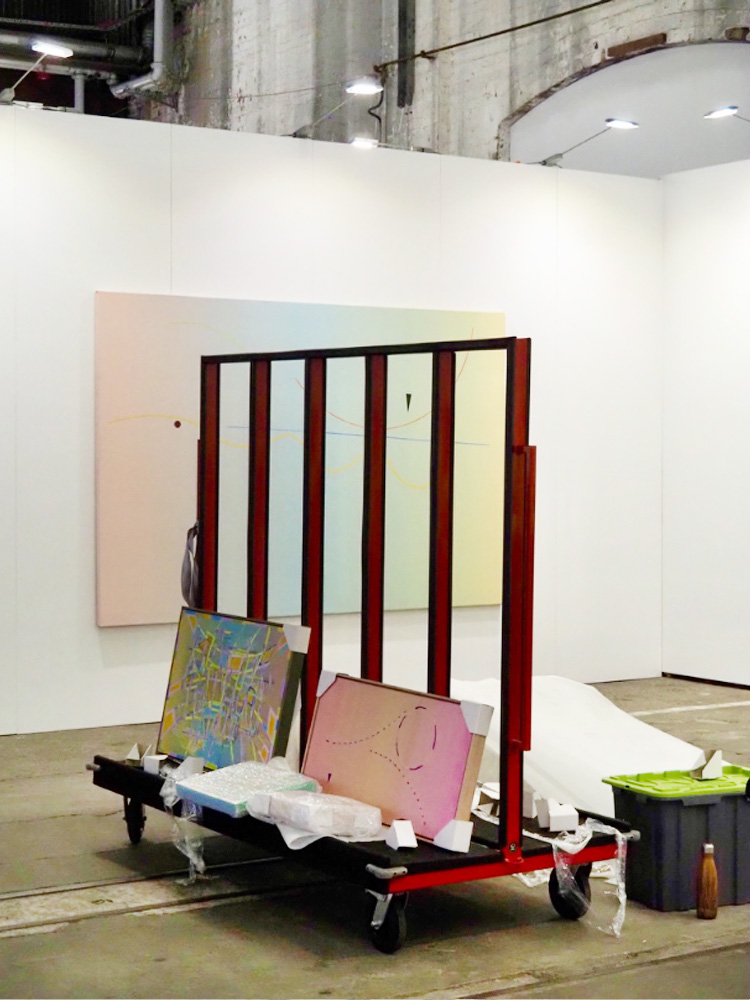
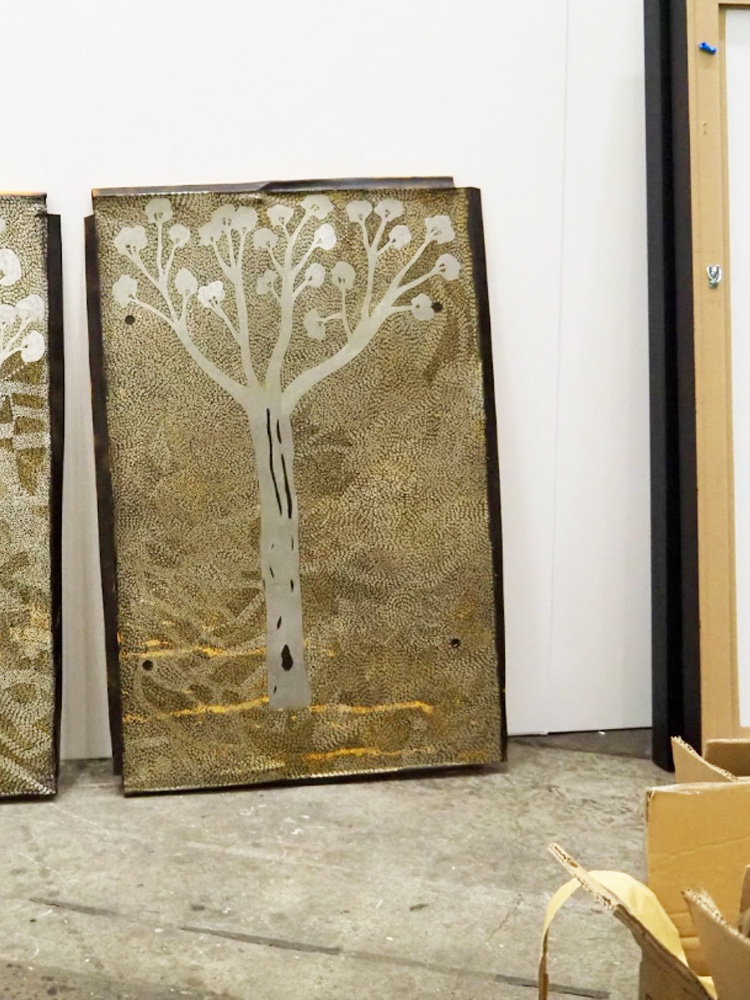
Now in its 10th year, Sydney Contemporary is Australasia’s most dazzling art fair and 2023 was no exception, with the work of 500 artists exhibited by 96 galleries from across Australia and the world. It’s not Frieze or Art Basel; you could probably knock a couple of zeros off the average price of a work. Although in many ways, therein lies the charm: Australian art is affordable. And Sydney knows how to throw a good party, with champagne or Campari bars around every turn.
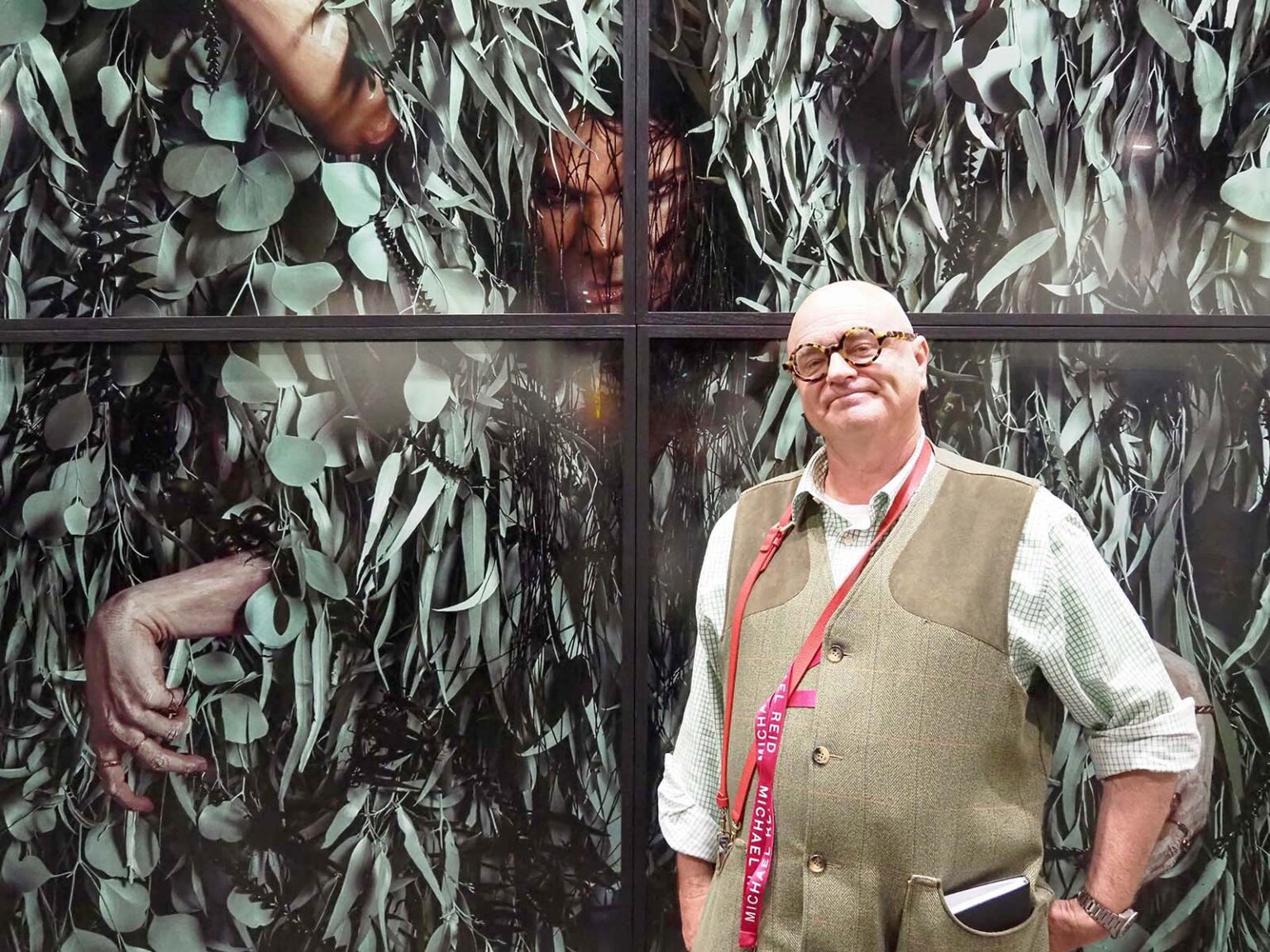
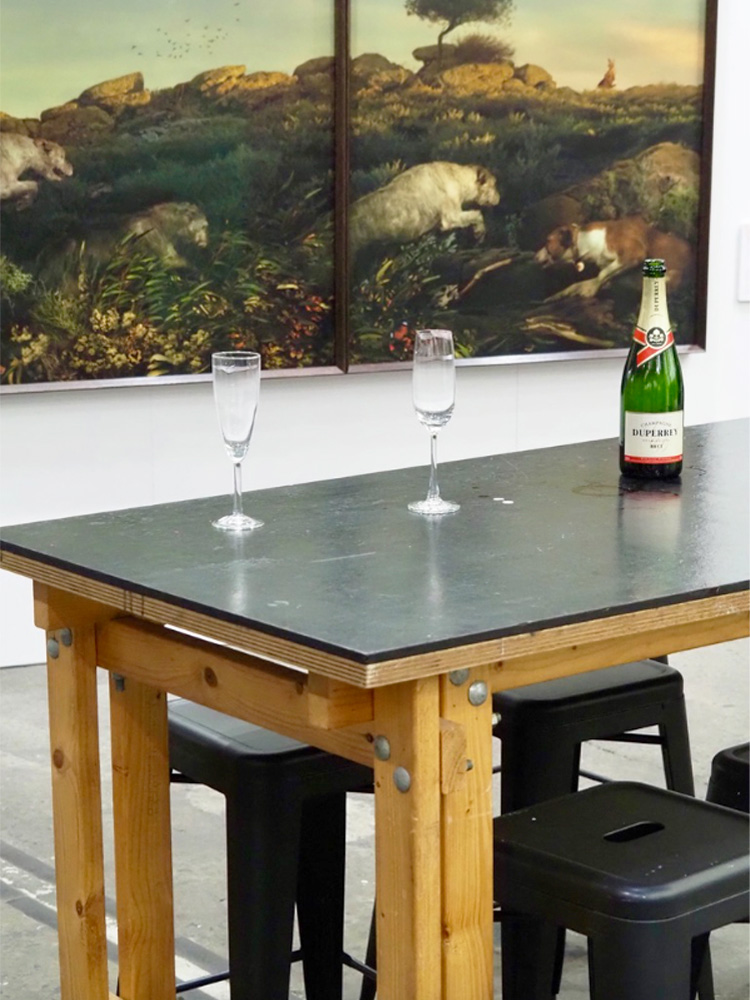
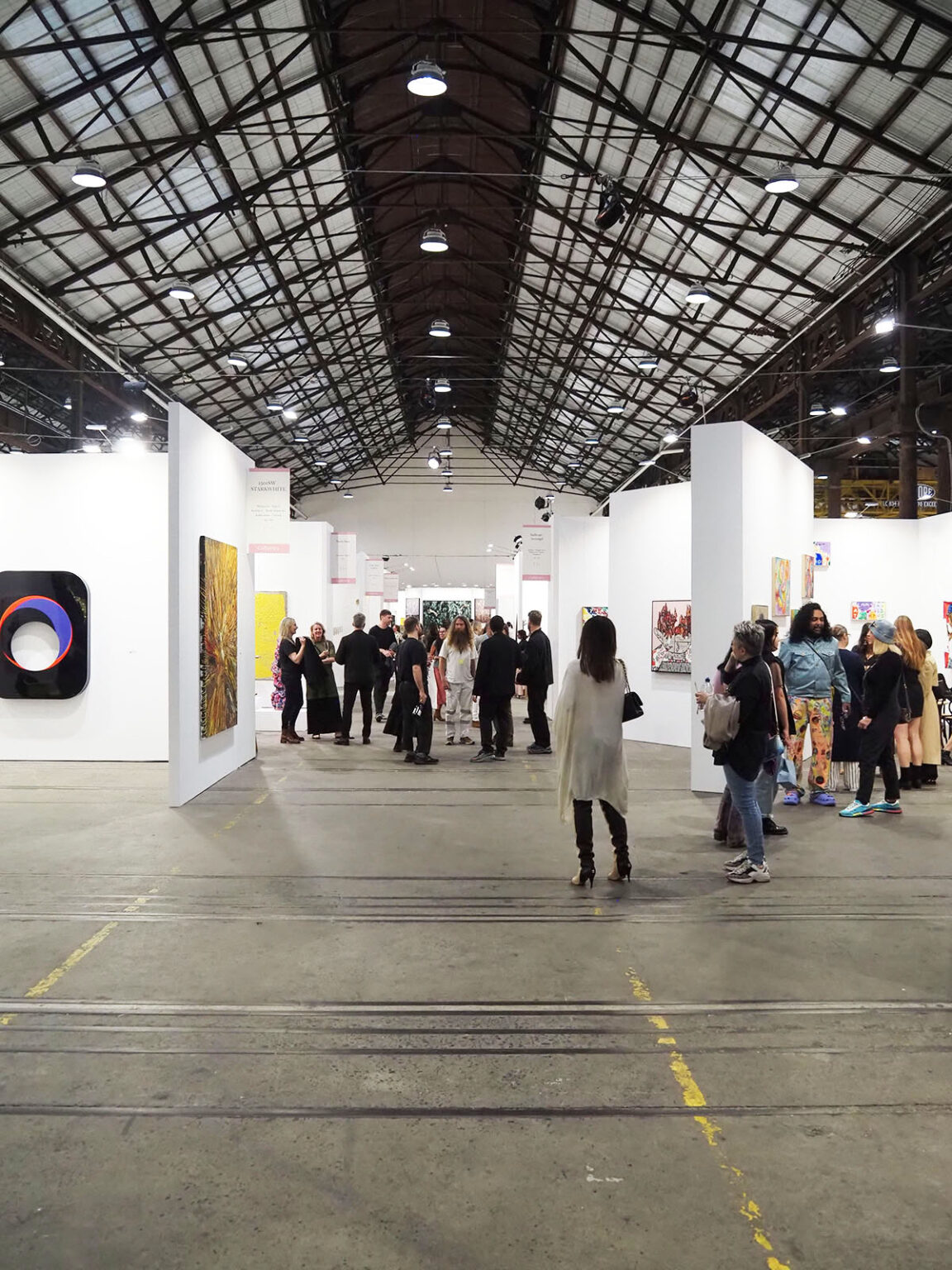
I ran into my old friend David Robinson – David has lived in Bangkok for many years and was instrumental in establishing Thailand’s first portrait prize in 2021 – who was at Sydney Contemporary with American collector and portrait prize judge, Tom Van Blarcom. I asked Tom what he thought. “I’ve been three times and have thoroughly enjoyed it. It isn’t stuffy like the other fairs; it isn’t riddled with attitude – or at least not too much, it is the art world after all! But for the most part, the galleries make you feel welcome. At fairs like Art Basel, the attitude should be cut into small white cubes and sold in the gift shop. Frieze Seoul is going on right now but I’d rather be at Sydney Contemporary. Great art and It’s more fun. I’ve bought three pieces so far and am mulling over two more.”

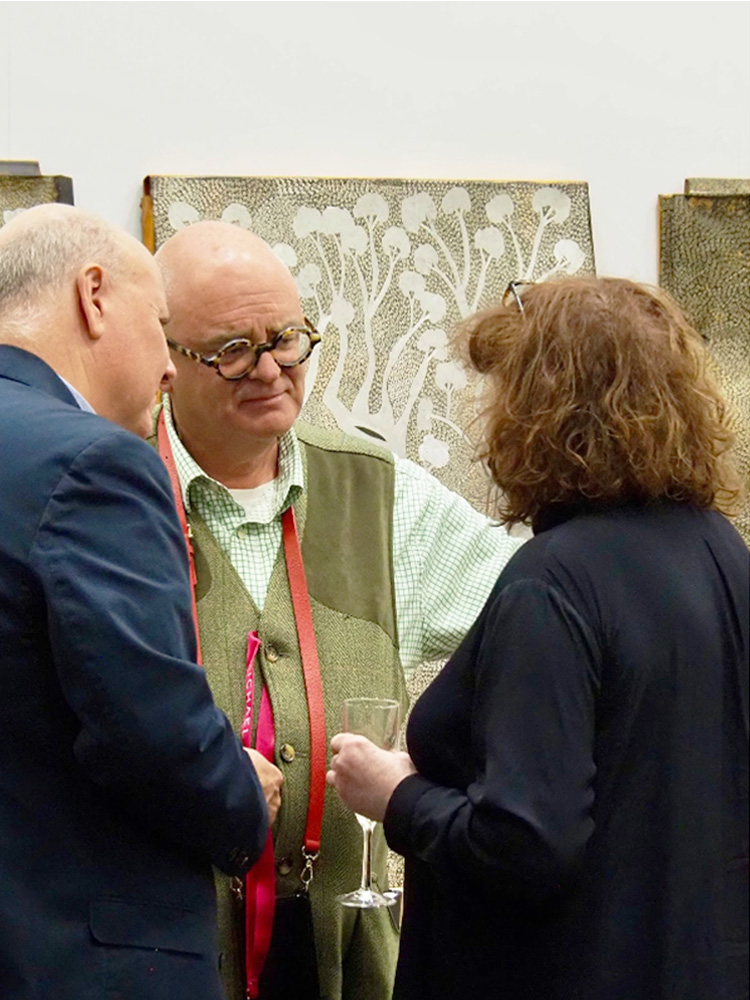

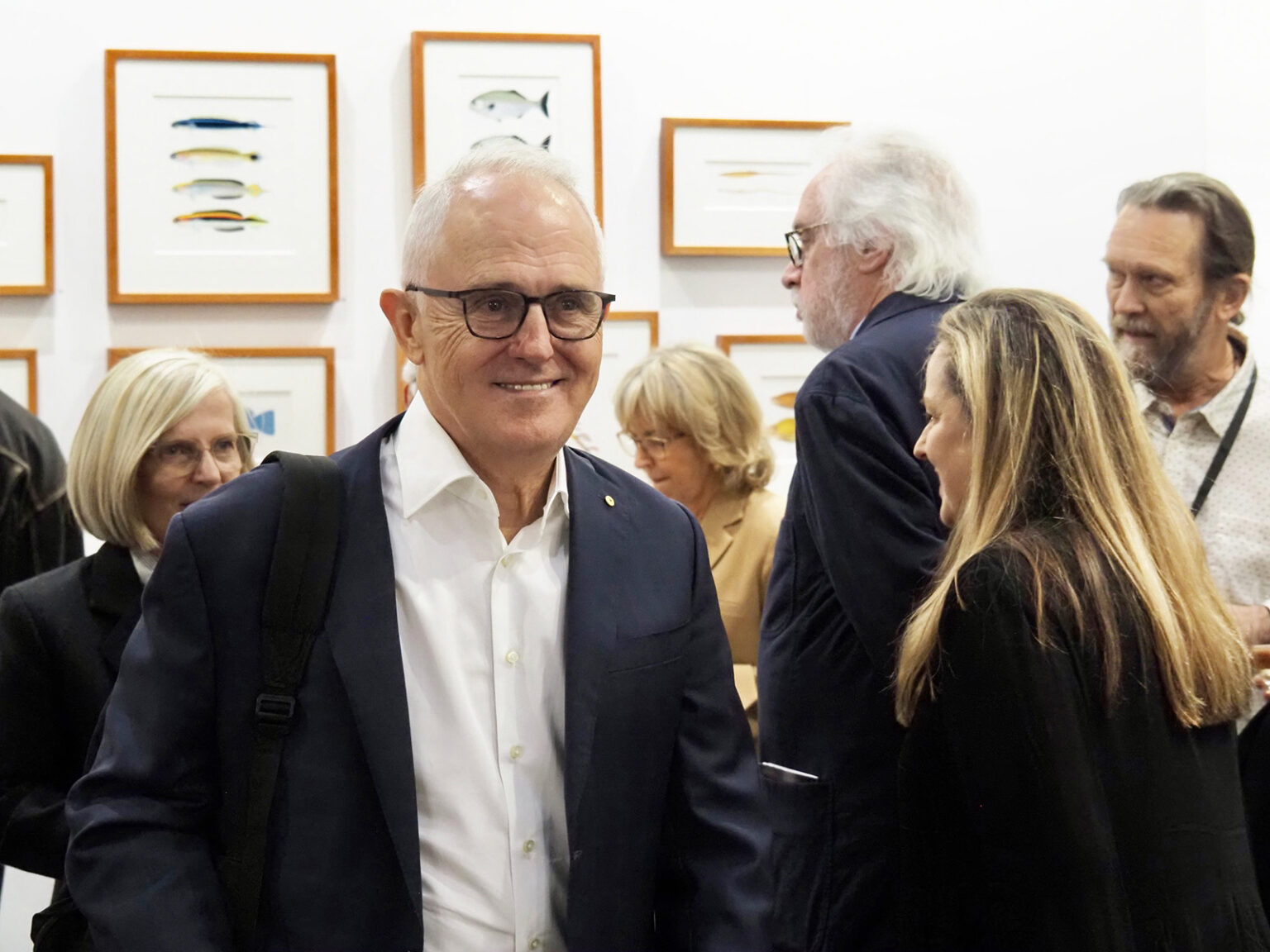
For me this year’s fair was looking only, although I imagined what I would have bought had I been cashed up. Monochromatic works on paper such as Godwin Bradbeer’s Performance Suite 10, Homage to Stelarc #2 at James Makin Gallery, and the wall of Tiger Yaltangki’s Malpa Wiru (Good Friends) at Alcaston were definites. Wiggan’s Ilmas and a lineup of Dhambit Munuŋgurr’s exuberant bark paintings for sure.
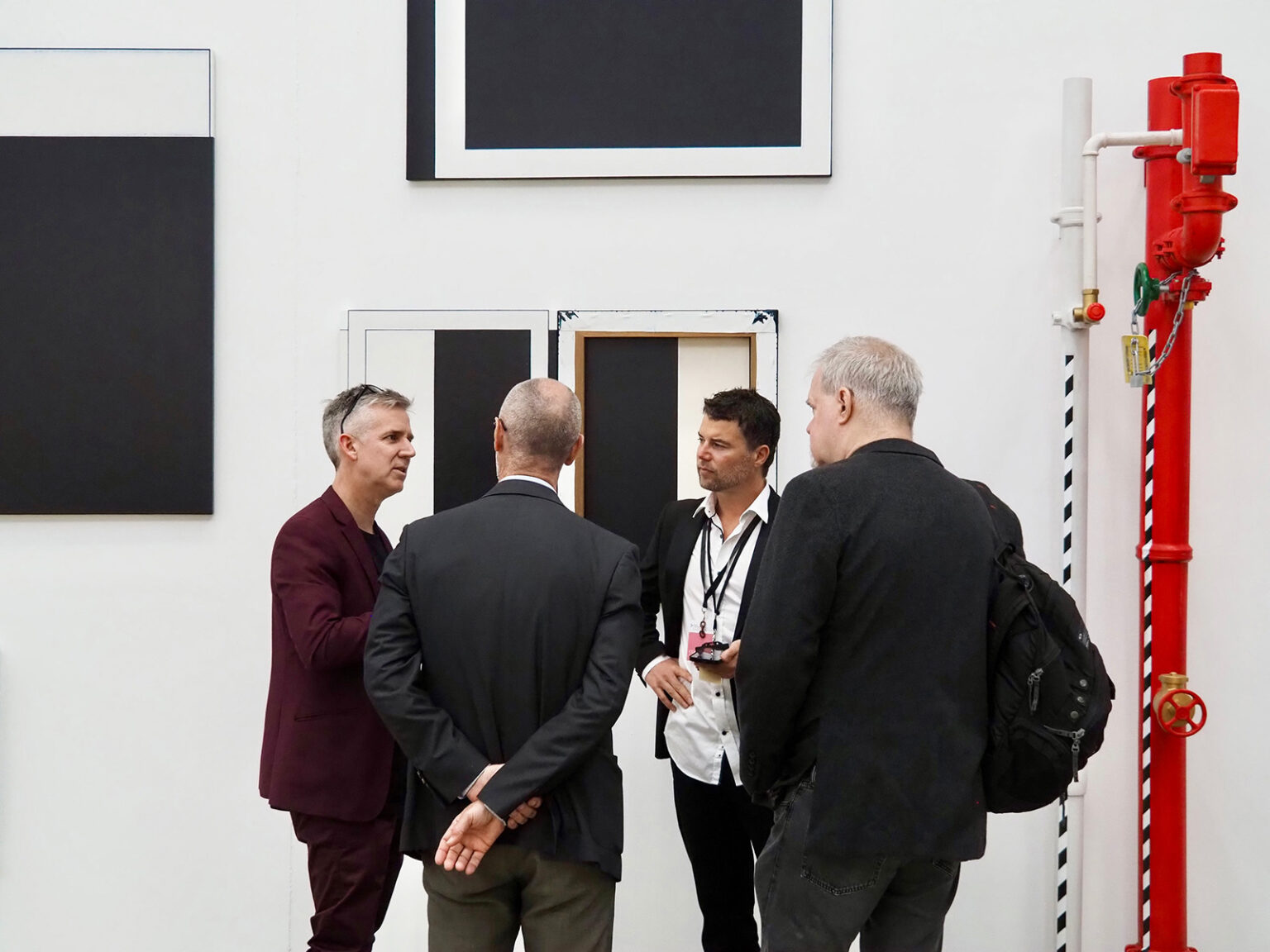
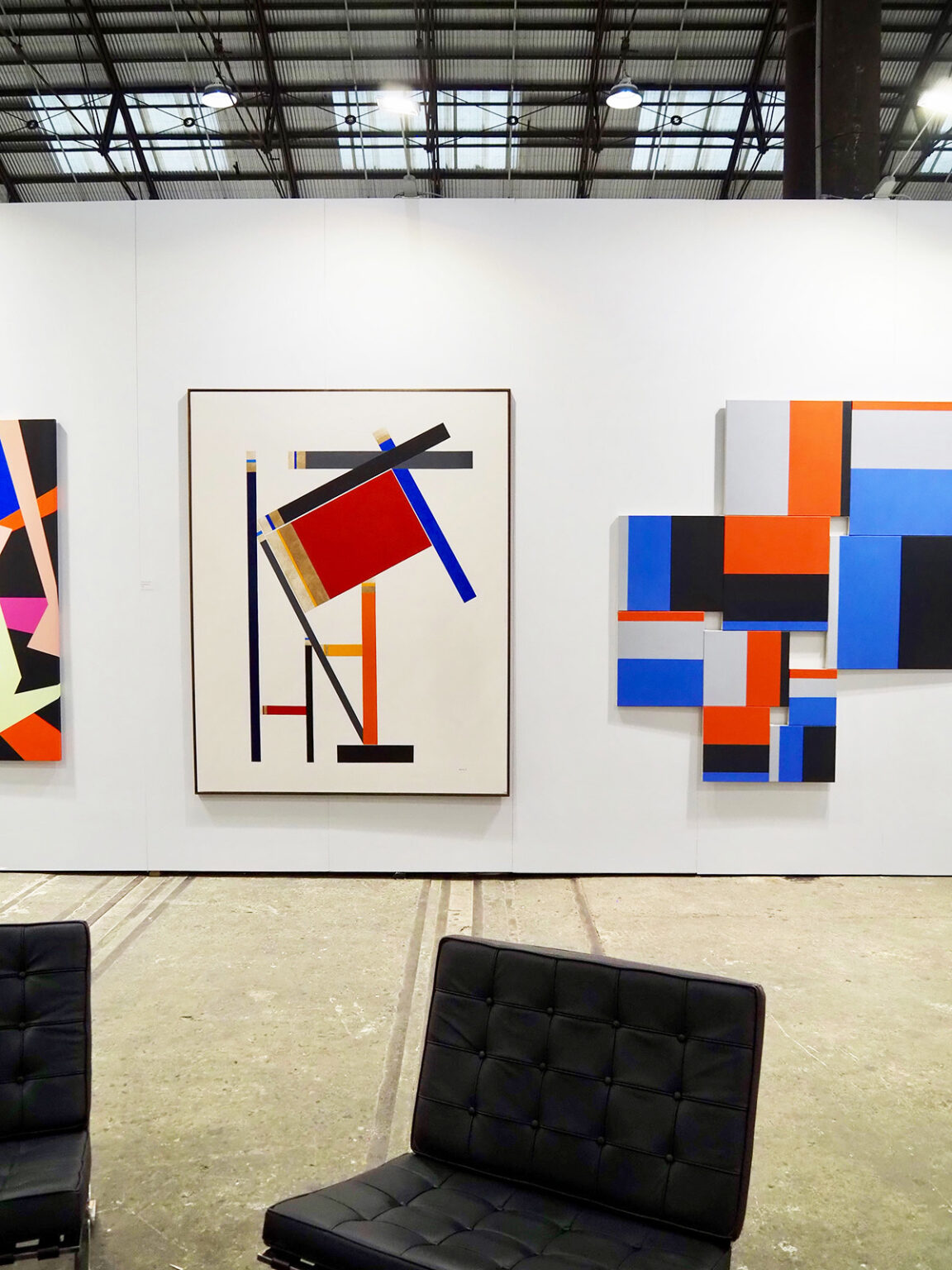


I’d design a whole room around the monumental canvases by Virginia Cuppaidge at Nicholas Thompson Gallery, including the six-metre-wide Cytheria, a delicate gradient of yellow to lilac and orange marked by the odd Miró-like line; and another room for Archie Moore’s suite of skin-coloured shapes alongside Box Sculpture by Augusta Vinall Richardson at The Commercial. And hard to say no to one of the blocky Anthony Gormley sculptures at Galleria Continua from San Gimignano, an exciting addition to this year’s fair.
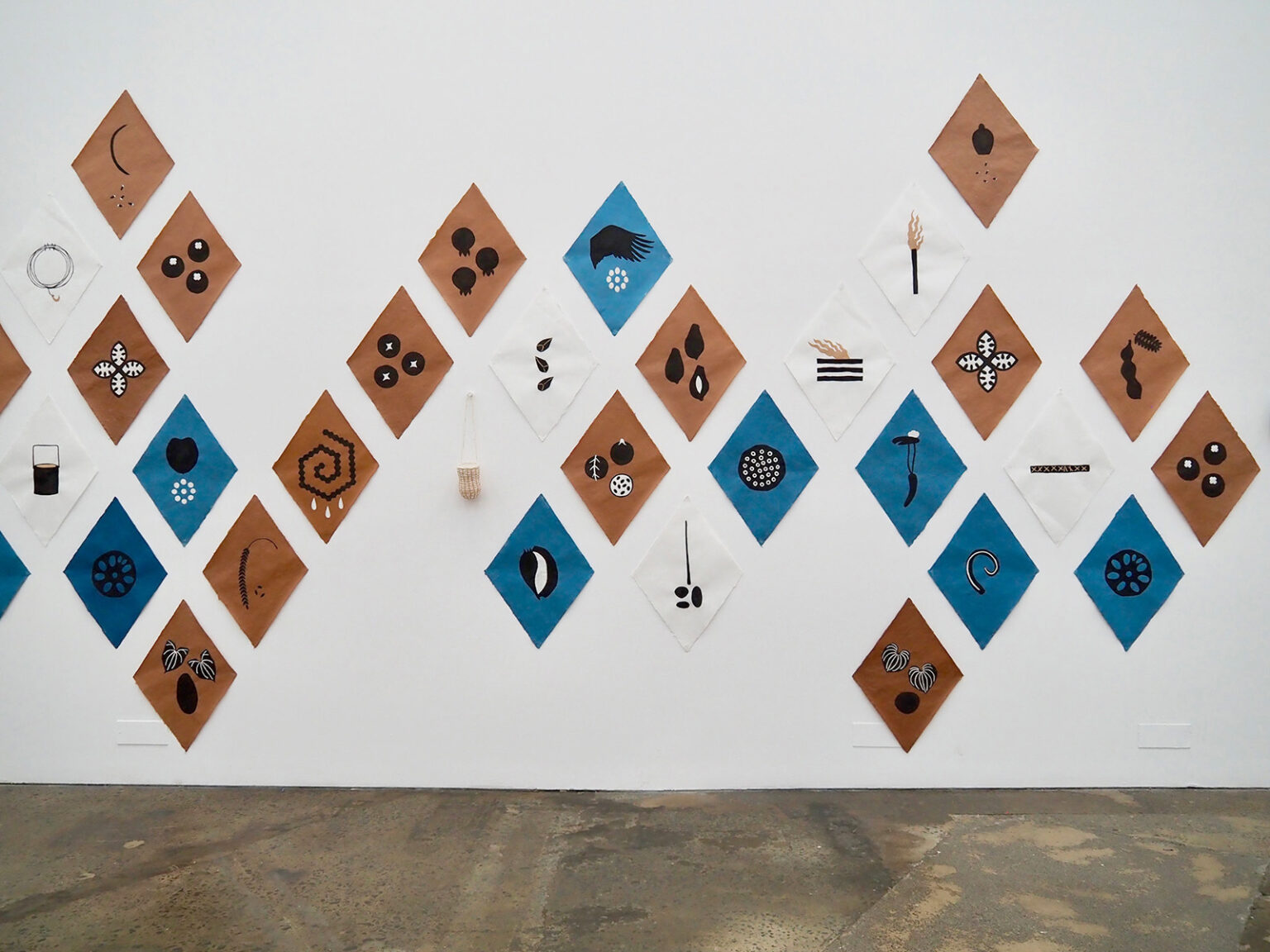
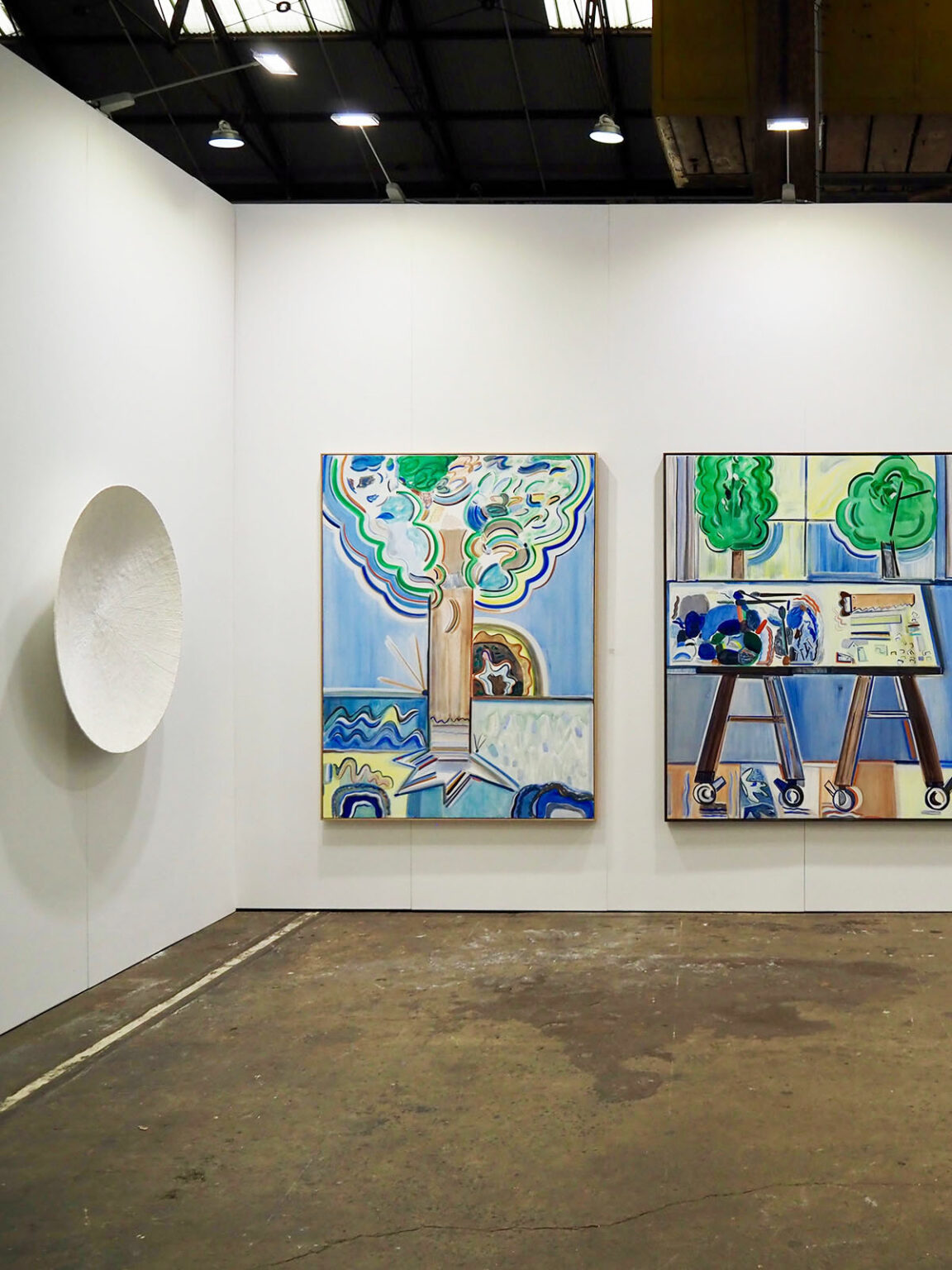

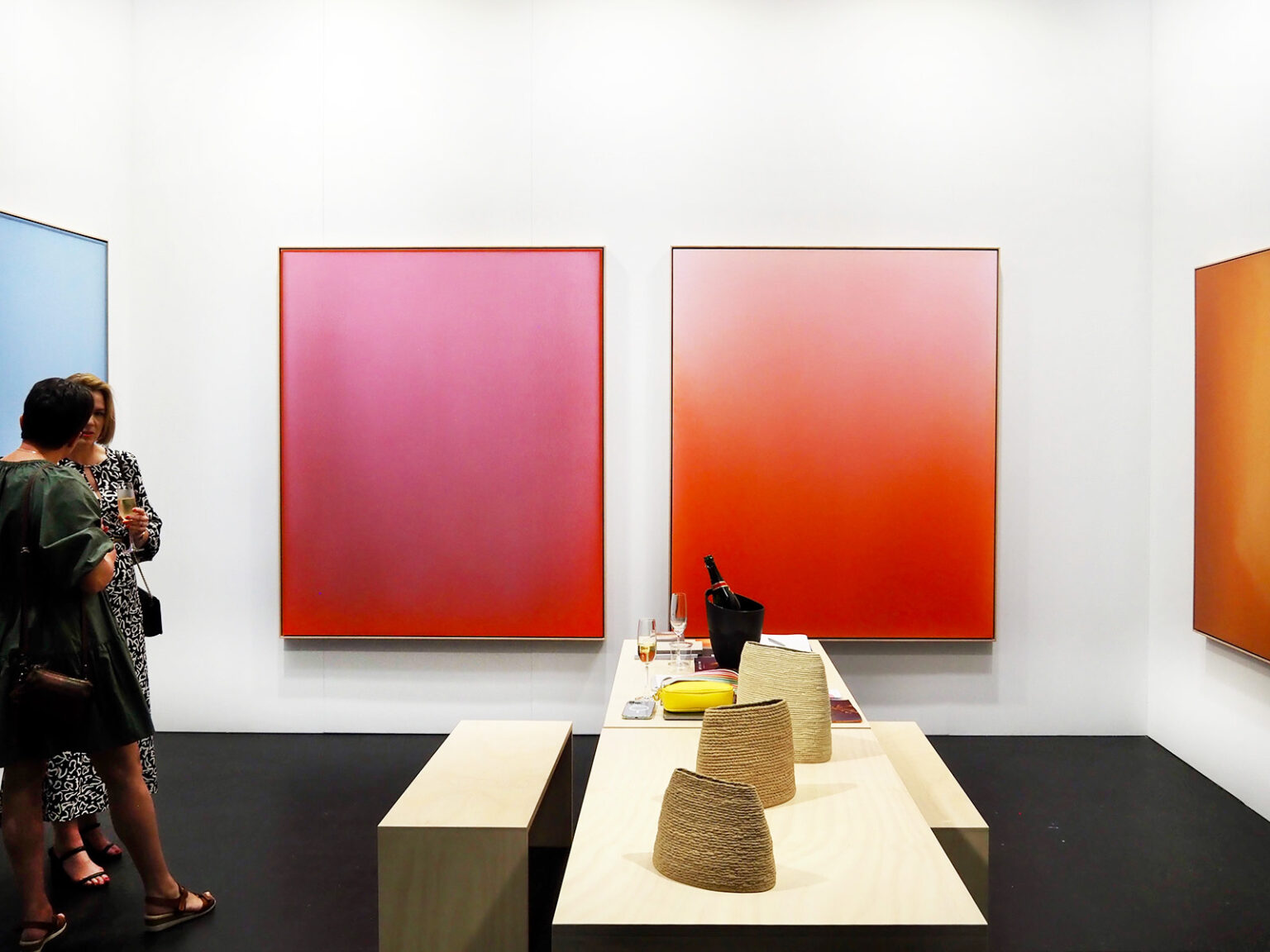
So much talent and too much terrific work to list, although I keep thinking about Gaypalani Wanambi. On install day, I was hanging out at Michael Reid’s stand as Toby, Daniel and Will positioned art, ready to hang. Among a flurry of levels and drills, frames and bubble wrap, I saw a couple of battered old road signs leaning against the wall. With so much construction paraphernalia whirling around I wondered where, between the hard hats and cherry pickers, they fit in. Peeking behind, Wanambi’s sublime etchings were revealed. A moment of pure joy – much like rediscovering Wiggan’s Ilma.
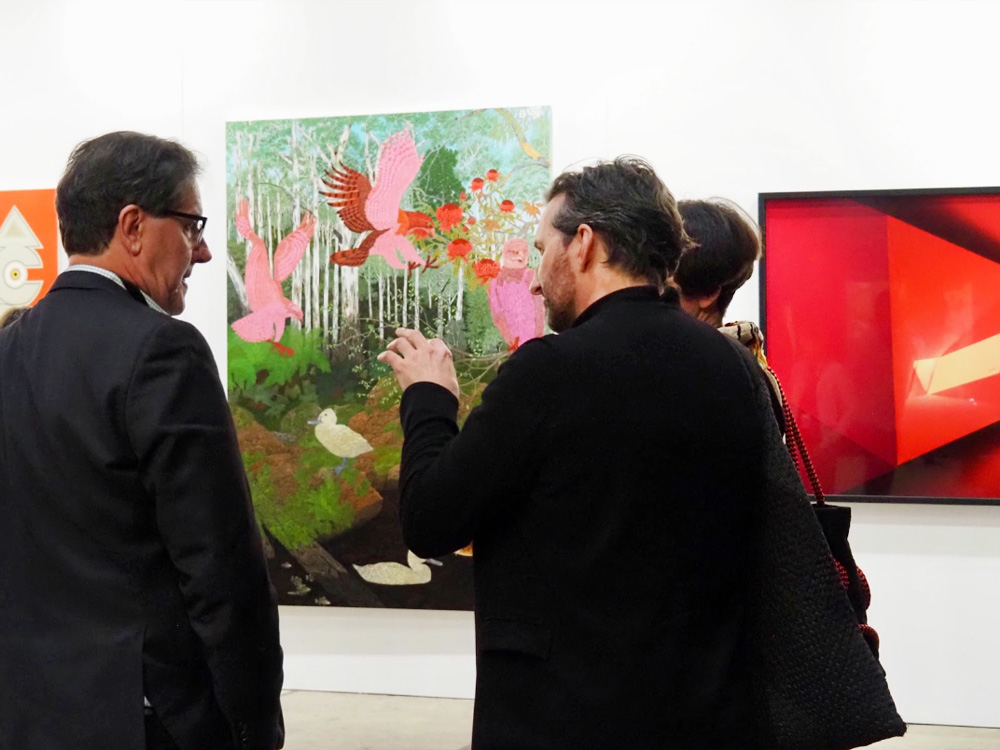

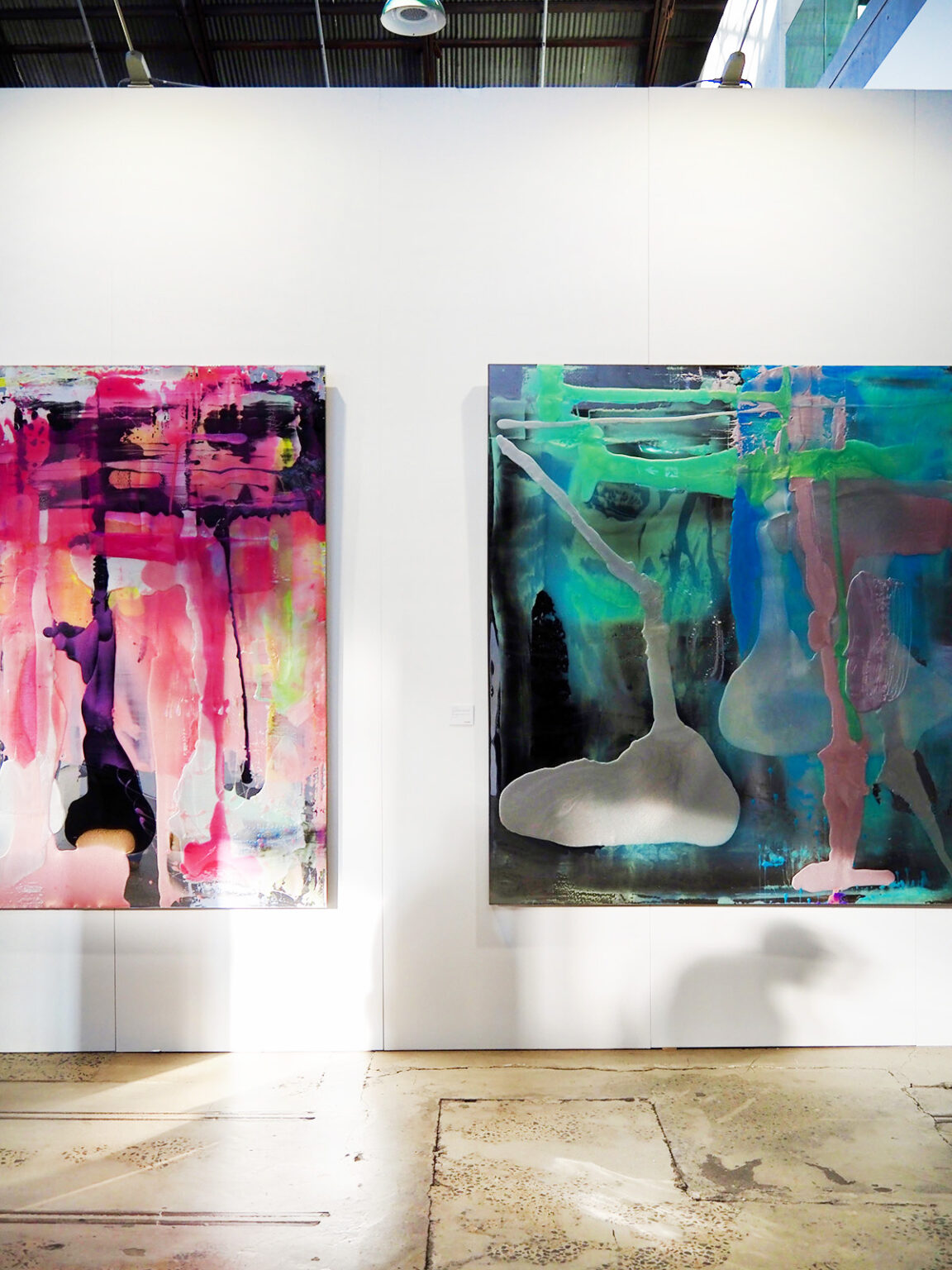


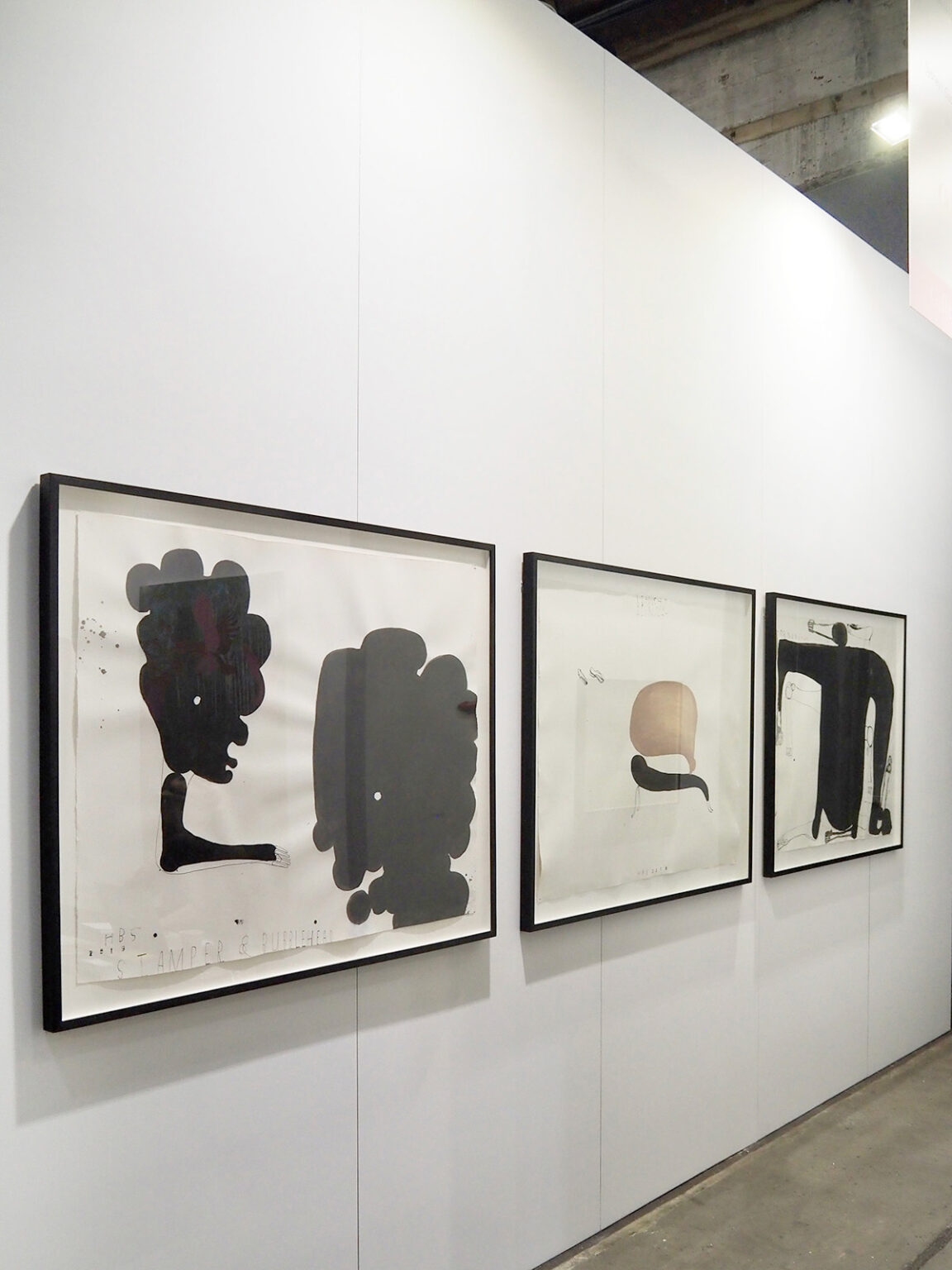
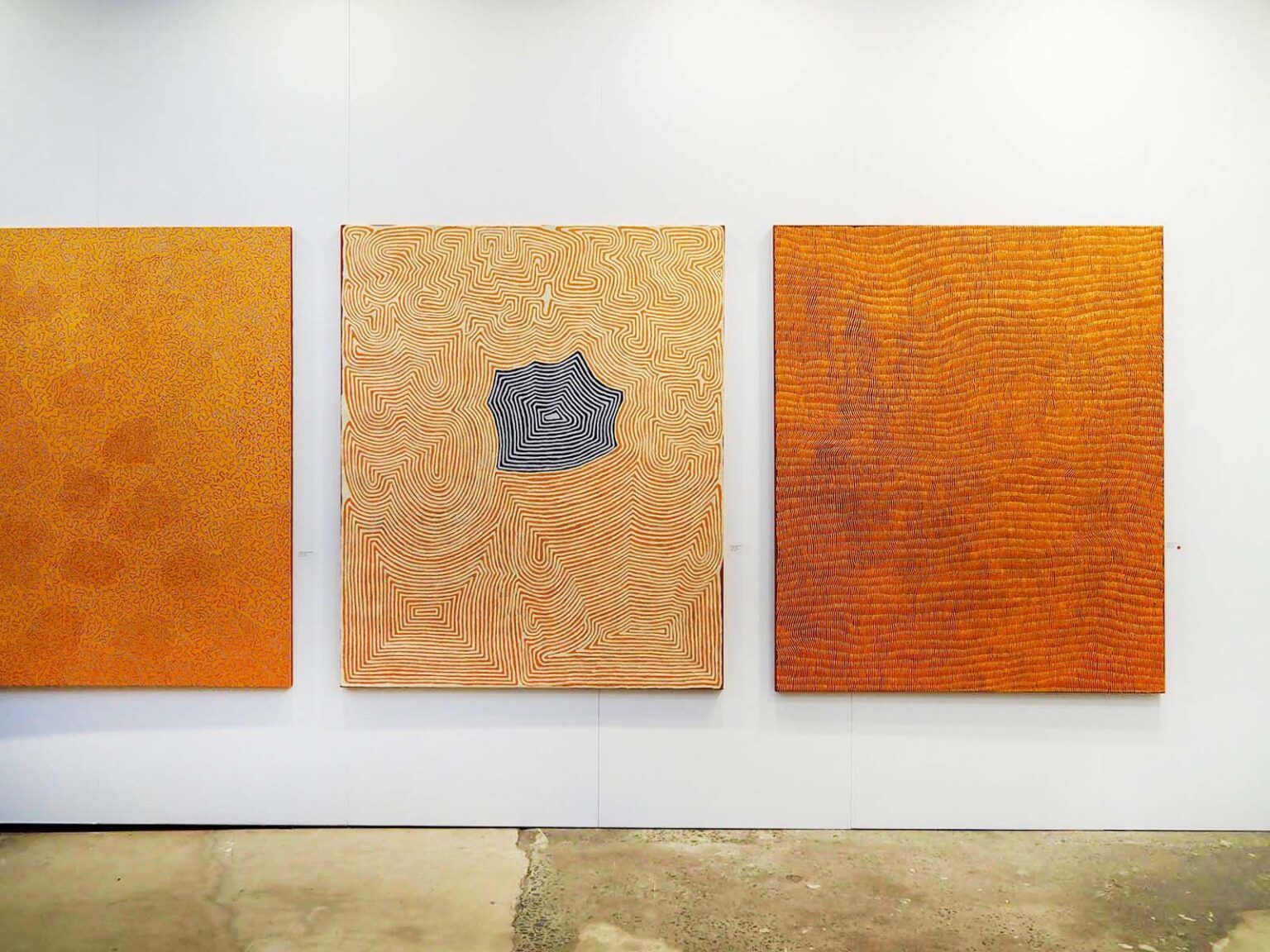
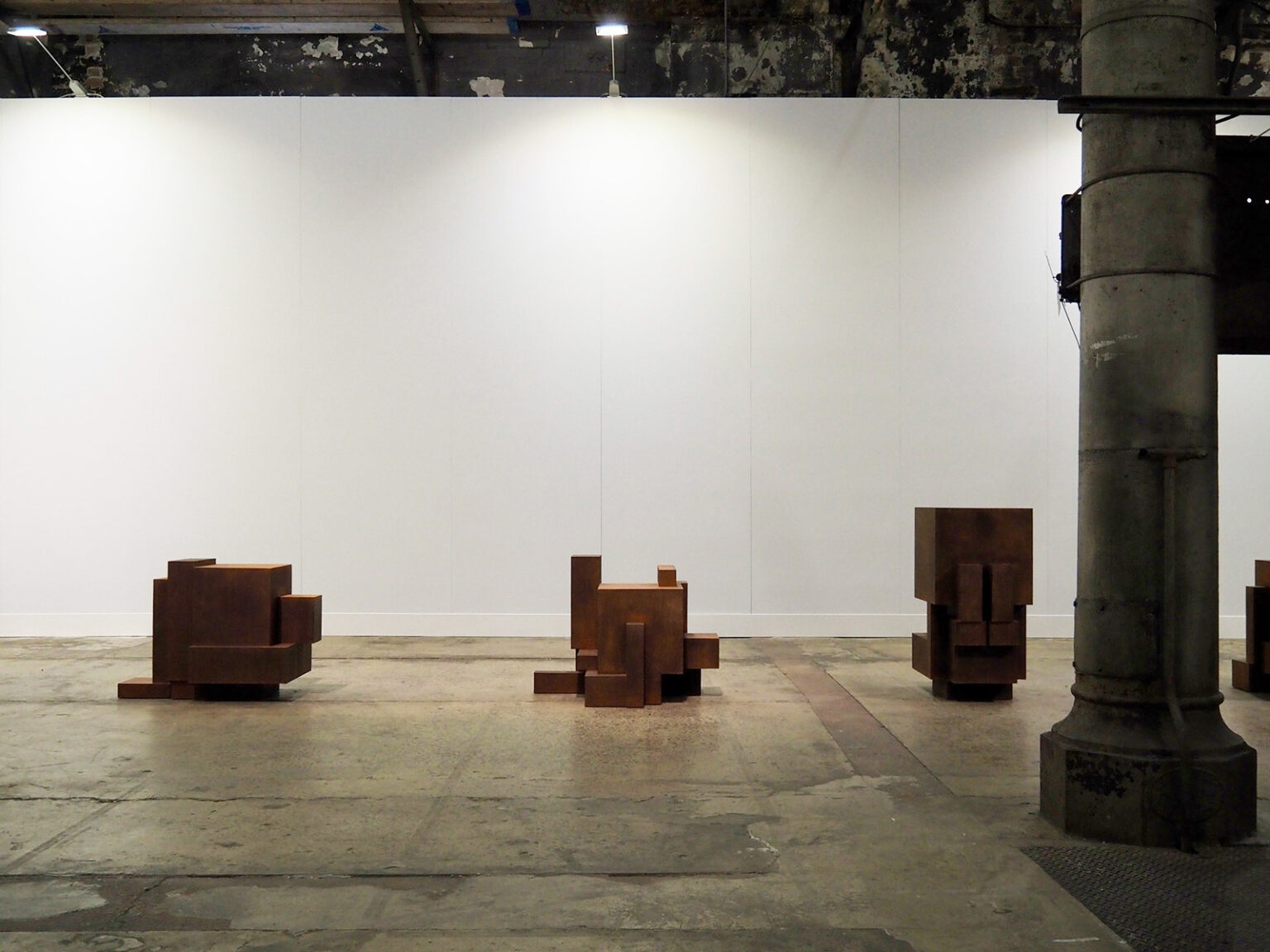
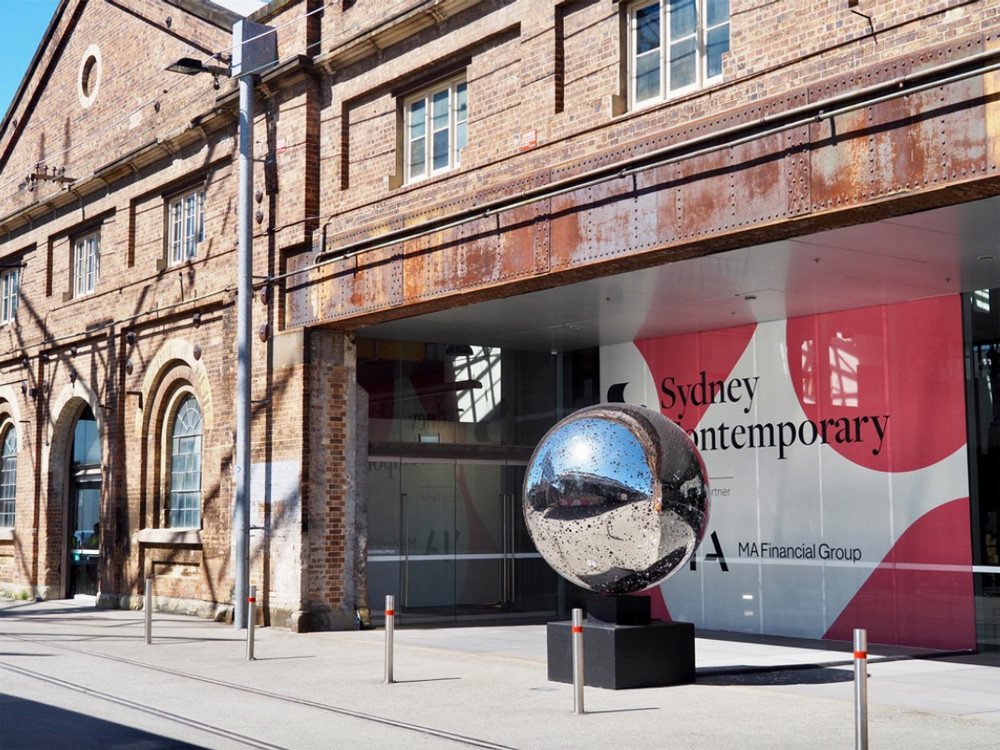
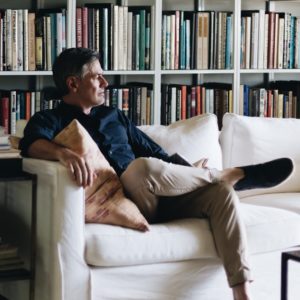
Jason Mowen
- XXXVIII LA Story by Michael Reid OAM April 2024
- XLIX Paddy’s Cottage November 2025
- XLVIII Washington DC by Michael Reid OAM November 2025
- XLVII The Outdoor Fireplace at Murrurundi by Michael Reid OAM October 2025
- XLVI Amelia Zander of Zander & Co. July 2025
- XLV Marlie Draught Horse Stud by Michael Sharp June 2025
- XLIV Trump Engulfed the Fires by Michael Reid OAM February 2025
- XLIII Newcastle by Jason Mowen October 2024
- XLII The Business of Gardening by Michael Reid OAM September 2024
- XLI Carly Le Cerf by Sarah Hetherington August 2024
- XL Pecora Dairy by Michael Sharp July 2024
- XXXIX Joseph McGlennon by Michael Reid OAM May 2024
- XXXVII Julz Beresford by Michael Sharp March 2024
- XXXVI Sydney Contemporary by Jason Mowen February 2024
- XXXV The US of A by Michael Reid OAM December 2023
- XXXIV Scone Grammar School’s principal Paul Smart by Victoria Carey November 2023
- XXXIII AgQuip by Jason Mowen October 2023
- XXXII Tinagroo Stock Horse’s Jill Macintyre by Victoria Carey September 2023
- XXXI The Old Gundy School House by Victoria Carey August 2023
- XXX Annette English by Victoria Carey July 2023
- XXIX The Ghan by Jason Mowen June 2023
- XXVIII All in the family: The Arnotts May 2023
- XXVII A Capital Plan by Jason Mowen March 2023
- XXVI Mandy Archibald March 2023
- XXV Paul West February 2023
- XXIV The Other Newcastle by Jason Mowen January 2023
- XXIII Mount Woolooma Glasshouse at Belltrees December 2022
- XXII Murrurundi to Matino: with Jason Mowen November 2022
- XXI James Stokes October 2022
- XX Adelaide Bragg September 2022
- XIX Tamara Dean August 2022
- XVIII Going home: Angus Street July 2022
- XVII Belltrees Public School June 2022
- XVI A Road Trip on the New England Highway May 2022
- XV David and Jennifer Bettington: from horses to houses April 2022
- XIV Denise Faulkner: Art of the Garden March 2022
- XIII Childhood memories: Willa Arantz February 2022
- XII Riding ahead: Giddiup January 2022
- XI Ingrid Weir’s rural life December 2021
- X Life by design: William Zuccon November 2021
- IX Life on the land: The Whites October 2021
- VIII Goonoo Goonoo Station September 2021
- VII Murrurundi: a garden playground August 2021
- VI Pat’s Kitchen July 2021
- V A creative life: Charlotte Drake-Brockman June 2021
- IV Magpie Gin May 2021
- III The Cottage, Scone April 2021
- II At home with Jason Mowen March 2021
- I A town that performs February 2021









